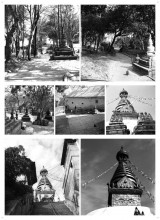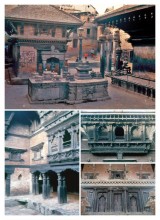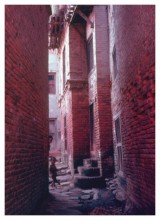Click here to see the
Exhibition as displayed
Nepal
Kathmandu Valley is considered to be one of the important enclaves of wooden and earthquake-resistant architecture. The temple architecture of this region is in a comprehensive and amply articulated language. Its vocabulary is derived from the structure, iconography and the elements of thebuilt form. It is a matter of enigma that it’s roof system has semblances with that of the Southernmost Indian region of Kerala’s and much less with that of neighbouring region of Himachal Pradesh. The slanting and splayed fenestration system with a special window element is unique to Kathmandu Valley. The plan organization of the temples has both the semblances and differences when compared to Kerala, however, clear enclaves like that of Kerala are not found in Kathmandu. On the other hand the urbanity of Kathmandu valley is well developed with the distinct expression of the residential areas and the civic spaces of the city as well as those of neighborhoods. The Durbar Squares of the main cities have a unique architectural personality. Many houses have a small stupa/temple in front of them and the neighborhoods have large agrarian squares.



